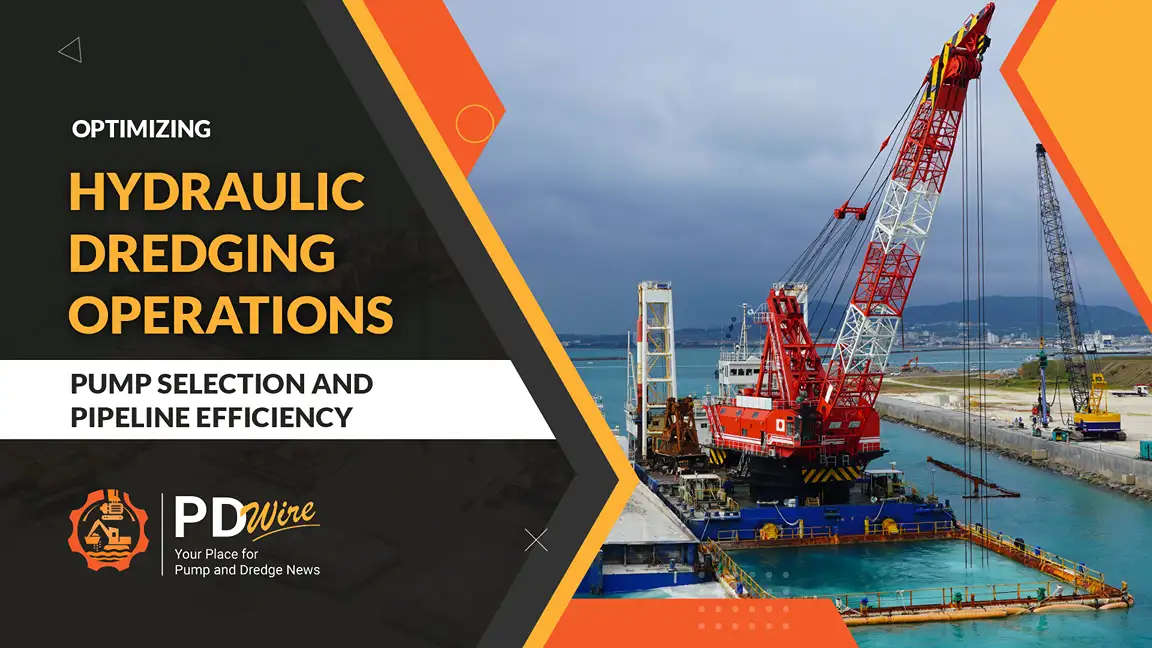1. Introduction
Hydraulic dredging plays a pivotal role in the maintenance and development of waterways, ports, and various other infrastructure projects. This complex process involves the use of powerful pumps designed to suction sediment, debris, and other materials from the bottom of bodies of water. Once the materials are suctioned, they are transported through a series of pipelines to designated disposal areas or facilities for further processing. While the primary goal of this operation is to remove unwanted sediments, optimizing the entire procedure for maximum efficiency can significantly reduce operational costs, improve overall performance, and extend the lifespan of the equipment used.
The overall success and productivity of a dredging operation depend on several critical factors, including selecting the right pumps, choosing the appropriate hydraulic dredging equipment, and designing an efficient pipeline system. These elements must work together seamlessly to ensure that the desired output is achieved without compromising performance or increasing costs unnecessarily. In an ideal setup, these systems also help minimize energy consumption, reduce wear and tear on machinery, and avoid prolonged downtimes, which can cause significant delays and incur higher operational expenses.
When it comes to optimizing the hydraulic dredging process, one of the most important considerations is pump selection. The performance of the pumps is integral to the success of the entire operation. Choosing the right pump can lead to better material handling and more efficient energy use, ensuring that the dredging process runs smoothly without wasting valuable resources. Similarly, selecting the right equipment—such as dredges, cutters, or boosters—can further improve the performance of the operation, ensuring that it’s able to handle various types of materials and dredging environments. Additionally, pipeline design plays a crucial role in ensuring that the slurry moves efficiently from the dredging site to the disposal area. Factors such as pipe diameter, material quality, and minimizing friction losses must be considered to enhance the system’s overall efficiency.
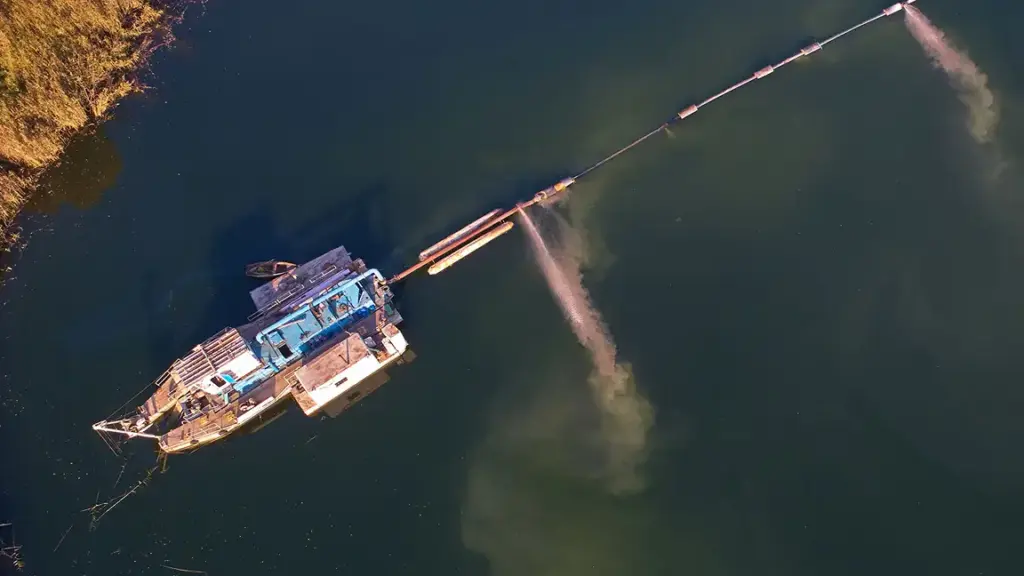
2. Understanding Hydraulic Dredging
Hydraulic dredging is a process that uses water jets or pumps to mix sediment with water, creating a slurry that can be transported through pipelines to a designated disposal area or for further processing. This method is commonly employed for dredging ports, harbors, rivers, and offshore installations, offering an efficient way to remove unwanted materials from water bodies. The hydraulic dredging equipment used in this process plays a critical role, as choosing the right tools ensures optimal performance in both the dredging and transportation phases.
The Dredging Process
The dredging process begins when a dredge pump or hydraulic dredging pump system is submerged in a water body. The pump generates suction, drawing in sediment and water, which are then mixed to form a slurry. This slurry is conveyed through a pipeline system to a disposal or processing area, where it can either be discarded or repurposed for land reclamation, wetland restoration, or other industrial applications.
Investing in the right hydraulic dredging equipment is crucial for effectively handling the material, ensuring smooth operation from suction to transport. Key considerations include the selection of the dredge pump, the design of the pipeline, and the power supply. Additionally, proper hydraulic calculations are essential to ensure efficient slurry transport, prevent blockages, and minimize energy consumption. The main components of the hydraulic dredging system include:
- The Dredging Pump: This is the core component of the hydraulic dredging equipment, responsible for generating the suction that draws in sediment and water. The pump type and size directly impact the efficiency of the dredging operation, making it essential to select a pump suited for the specific material being dredged.
- The Pipeline System: The network of pipes transports the slurry from the dredge pump to the discharge point. The design and material of the pipeline must be chosen based on the type of slurry and the distance it needs to travel to avoid clogs, reduce friction, and prevent material loss.
- Power Supply: The energy required to operate the dredging pump is a significant operational cost. Ensuring that the power supply is adequate for continuous, efficient pump operation is crucial for maintaining productivity and minimizing downtime.
Hydraulic dredging is a highly versatile method, capable of handling a wide range of materials, from fine sands and silt to heavier debris like gravel and rocks. To maximize efficiency, it’s essential to carefully select the hydraulic dredging equipment, as well as to design the pipeline system to match the specific requirements of the dredging task. By ensuring that all components of the hydraulic dredging system are well-coordinated, the operation can be optimized, resulting in reduced costs and increased performance. Proper maintenance and monitoring of the equipment also contribute to a more sustainable, cost-effective dredging operation, extending the lifespan of the equipment and improving overall efficiency.
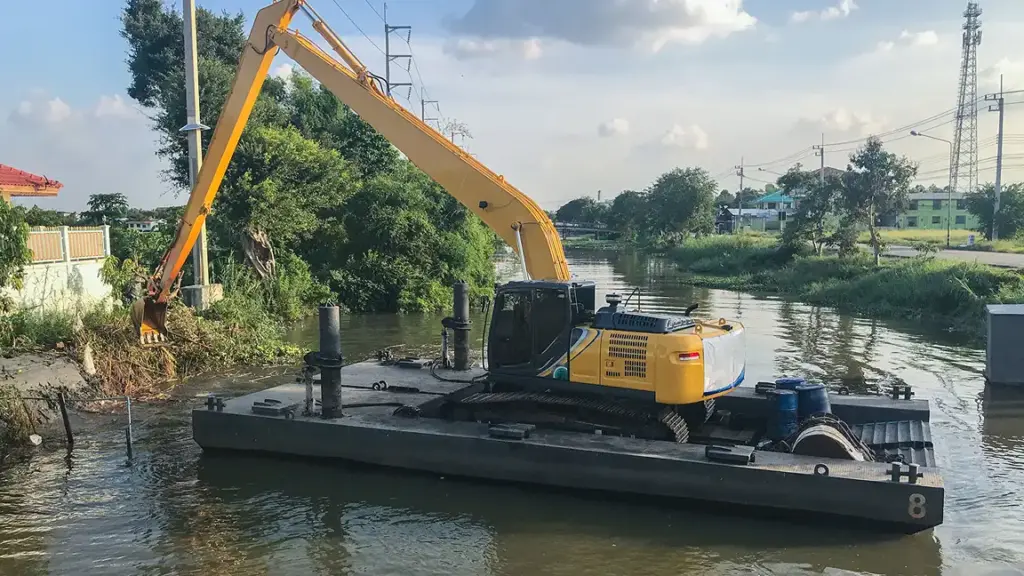
3. The Role of Pump Selection in Hydraulic Dredging
Selecting the correct pump is one of the most critical factors in ensuring the success of a dredging operation. The type of pump directly impacts the efficiency, cost, and longevity of the dredging operation. Different pumps are suited to different stages of the hydraulic dredging process, and choosing the right hydraulic dredging equipment can significantly improve performance.
Types of Pumps Used in Hydraulic Dredging
- Centrifugal Pumps: The most commonly used type of pump in dredging. These pumps rely on a rotating impeller to generate high pressure, pushing water and sediment through the pipeline. They are efficient for handling large volumes of slurry but may not perform well with very high viscosity materials.
- Positive Displacement Pumps: These pumps move a fixed amount of slurry with each cycle. They are ideal for handling thicker materials, such as clay or sludge. However, they tend to consume more energy than centrifugal pumps.
- Diaphragm Pumps: These pumps alternate inflating and deflating a diaphragm to move slurry. They can handle highly variable slurry conditions, although they are less common in large-scale dredging.
Key Considerations for Pump Selection
- Dredging Depth: The deeper the dredge, the more powerful the pump needs to be to generate sufficient suction. The hydraulic dredging process requires pumps designed to overcome the gravitational forces and friction associated with pumping slurry over long distances.
- Material Type and Viscosity: The type of material being dredged plays a key role in pump selection. For example, dredging fine sand requires a different pump than dredging thick, viscous sludge. Understanding the material properties ensures that the selected pump will be able to handle the slurry without unnecessary strain.
- Pump Efficiency and Power Consumption: Efficient pumps can significantly reduce operational costs. Pumps designed for the hydraulic dredging process need to maximize output while minimizing fuel consumption and wear.
- Pump Performance in Varying Conditions: Since dredging operations often occur under fluctuating conditions, it’s essential to choose pumps that provide consistent performance regardless of water depth, sediment density, or pipeline length.
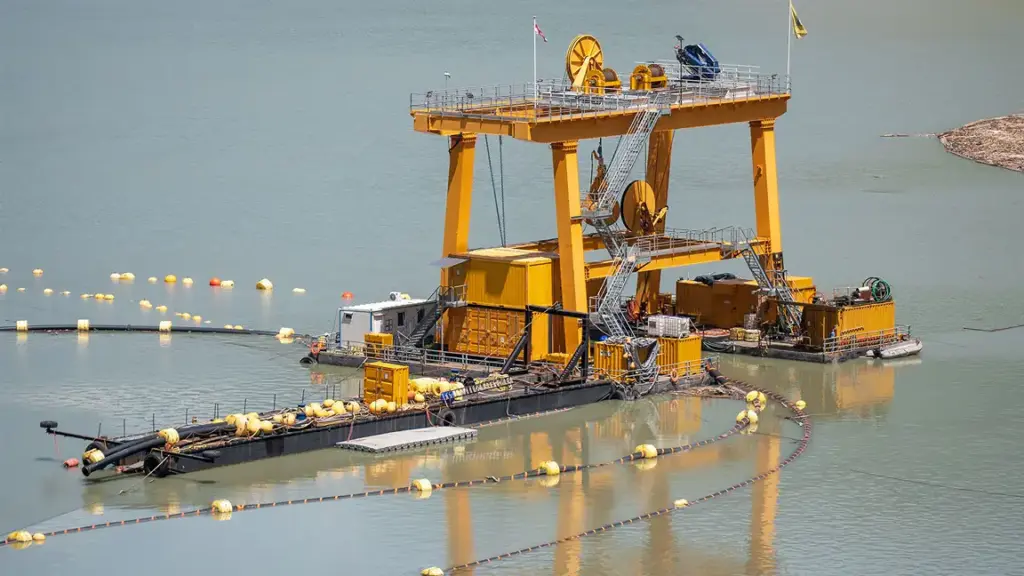
4. Optimizing Pipeline Efficiency
An optimized pipeline system is critical to ensuring the success of the hydraulic dredging process. Even the most efficient pump can be ineffective if the pipeline system is not properly designed. To achieve optimal performance, it’s important to focus on factors that affect pipeline efficiency, including diameter, material, friction losses, and more.
Key Factors Affecting Pipeline Efficiency
- Pipeline Diameter and Material: The diameter of the pipeline should be large enough to accommodate the slurry being transported, preventing unnecessary friction losses. The material of the pipeline is also crucial, as some materials may wear down more easily and cause blockages or leaks.
- Pumping Distance: The farther the slurry needs to be pumped, the more energy is required to transport it. Excessive pipeline length increases friction and reduces the overall efficiency of the hydraulic dredging process.
- Friction Losses and Energy Consumption: The friction between the slurry and the inside of the pipeline consumes energy, so minimizing these losses is crucial. The use of smooth, wear-resistant pipes is a key component of efficient pipeline design.
- Pipeline Bends and Elevation Changes: Pipeline bends and changes in elevation increase resistance and require more energy to move the slurry. A well-designed pipeline minimizes these issues to improve the overall efficiency of the hydraulic dredging process.
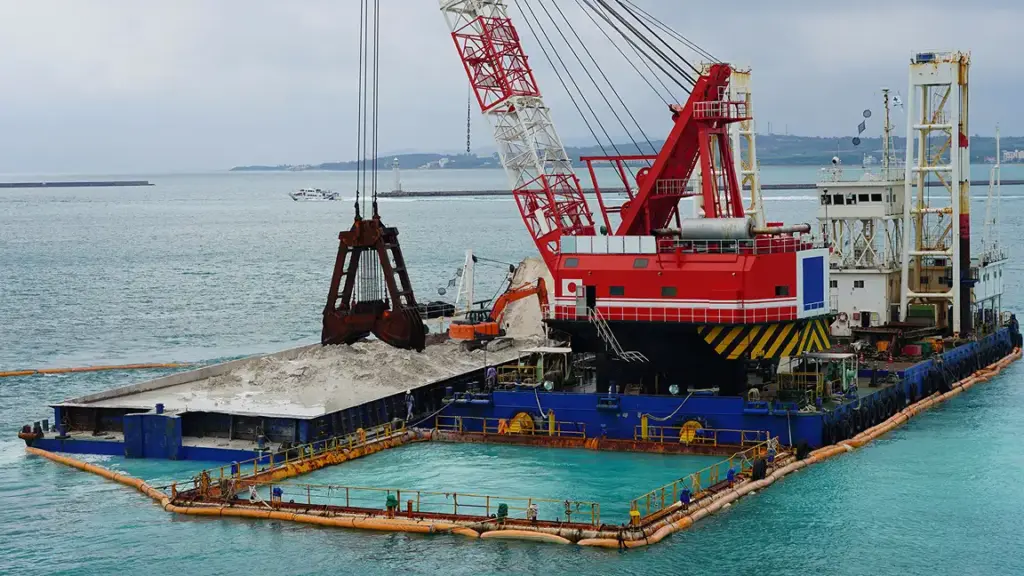
Best Practices for Optimizing Pipeline Design
To optimize pipeline efficiency, several best practices should be followed:
- Minimize Friction and Ensure Smooth Flow: Using smooth pipes with an appropriate diameter reduces friction and ensures that the slurry moves more easily through the pipeline.
- Monitor Pipeline Conditions: Regular inspections and maintenance help prevent blockages and leaks, ensuring that the pipeline operates at peak efficiency.
- Flexible Piping Solutions: In some cases, flexible pipes can optimize dredging efficiency. These pipes are easier to install and can adapt to varying dredging conditions, improving the flexibility and efficiency of the hydraulic dredging equipment used in the process.
5. Integrating Pump and Pipeline Design for Maximum Efficiency
To achieve optimal efficiency in dredging operations, it is essential that both the pump and pipeline systems are strategically integrated and coordinated. A well-designed system ensures seamless interaction between the pump and pipeline, preventing bottlenecks and eliminating operational inefficiencies. Effective system integration is crucial for maximizing the performance of the equipment, which ultimately leads to better operational results and cost reductions. The selection of the right hydraulic dredging equipment is a critical factor in ensuring that the pump and pipeline are appropriately matched to the specific demands of the dredging operation.
The Importance of System Coordination
Achieving peak performance in dredging operations requires careful and precise coordination between the pump and the pipeline. This synchronization guarantees that both components are optimized to meet the specific needs of the task at hand. Considerations for system coordination include:
Dredging Depth: When dredging at greater depths, a more powerful pump is necessary to generate the required suction and pressure. The pipeline design must then be robust enough to withstand the increased pressures. If the pipeline cannot handle the elevated stress, it could lead to failure or operational inefficiencies. Therefore, selecting the right pump and designing the pipeline to match these demands is essential to avoid disruptions during the dredging process.
Viscous Materials: Dredging materials with higher viscosity, such as thick silt, mud, or clay, requires a pump that is capable of handling denser slurries. In such cases, a positive displacement pump is often preferred, as it is specifically designed to manage thicker, more challenging materials. Additionally, the pipeline should be designed with a larger diameter to reduce the risk of clogs or blockages, accommodating the increased thickness of the slurry and ensuring smooth transportation.
Flow Rate and Pressure Characteristics: It is crucial that the pump’s flow rate and pressure characteristics are in harmony with the pipeline’s design specifications. Any mismatch in these parameters can cause significant operational challenges. For instance, excessive flow or pressure can lead to pipeline strain, while insufficient flow or pressure can result in delays, system inefficiencies, and increased energy consumption. Ensuring that both components are appropriately matched is essential for achieving a smooth and efficient dredging operation.
In conclusion, the integration of pump and pipeline design is vital to achieving maximum efficiency in dredging projects. A well-matched system prevents potential issues, improves performance, and reduces operating costs. Therefore, careful planning and consideration of each element of the system are necessary to ensure the success of dredging operations.
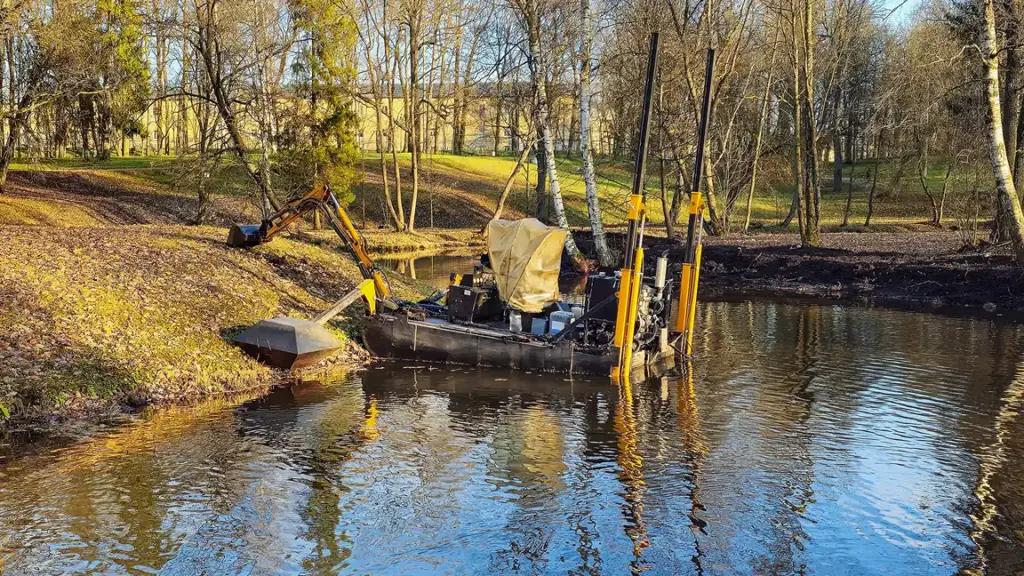
6. Cost-Saving Benefits of Optimization
Optimizing the hydraulic dredging process by selecting the right pumps and designing efficient pipelines offers substantial cost-saving benefits.
Reduced Fuel and Energy Consumption
Energy costs are one of the largest operational expenses in dredging operations. By selecting high-efficiency pumps and optimizing pipeline design, energy consumption can be significantly reduced, leading to lower fuel costs. Pumps that operate efficiently at various flow rates and pressures help minimize energy waste, reduce operational strain on the system, and enhance overall performance. This not only cuts down on fuel expenditures but also extends the life of the hydraulic dredging equipment, reducing the frequency and cost of maintenance and repairs over time.
Increased Operational Uptime and Reduced Maintenance
By optimizing the pump and pipeline system, the likelihood of breakdowns and maintenance issues is reduced. This ensures tha dredging operations can continue with minimal downtime, leading to increased productivity and profitability. An optimized system also reduces the wear on hydraulic dredging equipment, further improving overall operational efficiency.
Improved Material Throughput and Reduced Downtime
An efficient dredging system allows for the continuous transport of slurry, improving throughput and reducing downtime. The reduced friction and optimized pump performance allow for uninterrupted operations, which translates into faster project completion times and greater cost savings. Using the best hydraulic dredging equipment is essential for achieving this level of efficiency.
7. Conclusion
Optimizing the hydraulic dredging process is essential for improving performance, reducing operational costs, and extending the lifespan of hydraulic dredging equipment. By giving careful attention to factors like pump selection and pipeline design, dredging operations can achieve substantial cost savings while enhancing overall operational efficiency. Effective integration of these components ensures that dredging projects are not only more productive but also more sustainable in the long run. Investing in top-tier hydraulic dredging equipment can make a significant difference, ensuring the success of any dredging project and resulting in better returns with lower overall expenses. Ultimately, a well-optimized system will help improve both the performance and longevity of the operation, making the entire dredging process more efficient and cost-effective.
